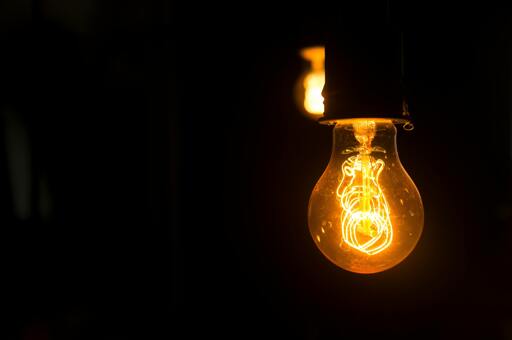…the contractor-grade FEIT incandescents installed when we built our house enjoyed a MTBF of about five years; the FEIT halogens (‘high-efficiency incandescent’) i stocked up to replace them after traditional incandescents phased out are on the order of six months MTBF…
…while i question whether the manufacturing and distribution of ten fourty-watt halogen bulbs really emits less carbon than one sixty-watt incandescent running for the same duration, at least the spectra are unchanged: i’ve yet to find any LEDs which offer acceptable black-body spectra and i specify the things professionally…
Every halogen bulb I had, claimed twice the life of a typical incandescent. I’m not disputing your experience because we were inflicted with some godawful trash, just that the carbon expectations were likely made on these claims
…my experience before ‘high-efficiency incandescent’ halogens was the same: i have thirty-year-old proper halogen lamps either still going strong or which have been replaced only once over that period…these little A19 halogens, though, have an such absurdly-short duty cycle that they’re viable only by virtue of stocking up dozens of cases for pennies on the dollar when they were phased out a couple of years ago…
…i do hope that we have respectable consumer bulbs available in perhaps five years after those few hundred halogen bulbs are gone, but i’m not optimistic as poor spectra appear inherent to LED technology and the market seems to have settled on ‘good-enough’…proper incandescent bulbs are of course still available for specialty applications, but they’re not easy to get…
I’ll tell my completely unprofessional and subjective opinion, as someone with migraines and preferring moderately illuminated (like sum of moonlight and general city light pollution multiplied by two) spaces.
A room with old light bulbs on is a lot more bearable for me than a room with LEDs on.
I suspect this is about spectral characteristics (softer and more dispersed orange light, if that makes sense), which can be mimicked by modern technologies, it’s just that we again live in a time when nobody cares about subtle things affecting quality of life.
EDIT: didn’t erase unconnected thoughts further.
But - everybody cares about getting a new unusable touchscreen phone every year or so. BTW, why touchscreens? Because you have to choose things or scroll things or zoom in&out things, sometimes enter small amounts of text. It’s literally designed to be of limited use for anything important with other things equal, and that’s intentional, because when a device becomes more useful than that, users start having opinions and demands and one can’t have that “predictable progress” with new “flagship phones” and other such stupidity, this is also the reason for industry as a whole going bad`. A touchscreen does not make a device more usable in some other situations.
UI and UX are good when they are predictable and bad when they are not. Even a child or a completely non-tech person will do things more efficiently with a physical keyboard. They’ve just been gaslighted into thinking differently.
Almost every LED in my house is the filament style. You would love those. Great company I linked. I wrote them for advice and got a long, technical and accurate reply.
Buy led lightbulbs with lower light temperature, they are quite similar to old bulbs.
Also illumination has a lot to do with the luminaries more than the bulbs themselves.
The unrelated bit about touchscreens: i like the one in my notebook, combined with keyboard use.
Btw: illuminate a wall and you get that soft and dispersed light.
“Combined” is fine.
If you mean light dispersed from the wall, then yes. If you mean semitransparent something illuminated from the inside, hell no.
I prefer physical keyboards, too, as do many others. It turns out those of us who spend a lot of time composing text are outnumbered by those who do more content consumption, though, so the surface area is given to touchscreens, and profit-driven manufacturers seldom bother with keyboard models any more.
As for light quality, yep, incandescent bulbs were generally more pleasant. But not so much better as to justify the pollution now that we have 8 billion people on this planet.
Were common until the EU regulations “kill” them.
As someone who lived with them for the first thirty years or so of my life I am very glad they are gone. I haven’t had to replace a single light in my last ten years since I moved to a home that is all LED while it was a constant thing in my childhood.
I need to replace LED bulbs/reflectors 2-3 times a year.
Osram, the best for it’s price range, but they are running too hot.I’ve been using GE Relax HD most recently. I don’t remember when I bought them, but it has been at least 5 years. I haven’t had one die yet.
(All the Cree bulbs I used before these died quickly.)
Really? I don’t remember the last time I replaced an LED bulb. I replaced one old CFL with an LED when it died last year, but before that… I genuinely can’t remember an LED bulb dying. And I buy the cheap ones. Are yours being overheated? Maybe you have really bad power quality?
I think I found the issue:


Oh yeah there’s your problem. Good thing it was just bulbs burning out and not your house burning down.
I have one specific light fixture that kills led lamps with no mercy. They don’t fully die though, just decrease luminosity over time till they are useless. Tried with brand and non brand lamps. I think because it’s basically upside down glass cups with no vents at the top.
Yeah, if they’re trapping heat, that might be causing overheating. If you care enough, you could replace that one with something with vents.
I’m betting on bad airflow on some fixtures, installed by a landlord.
And/or bad switches? Legrand branded.
Some bulbs have cracked plastic housing.They are rated 220-240 V AC, 50/60 Hz, I think have constant current regulator.
Not the same guy, but I have some LED bulbs I’ve never replaced. I have some where I need to replace them every couple years or so. It’s… weird. I think it’s gotta be certain types of bulbs and/or the wiring in those parts of my house that just die faster.
Might have power spikes in your wiring? Some household aplliances are really bad for that.
I don’t have an instrument to measure it. But good clue.
One tidbit the article neglects to mention: the rapid heating from a cold start often caused a critical failure in an old filament, which is why bulbs would most often burn out right when you turned them on. You’d get that quick flash, maybe a pop, and the light would be dead. First you’d flip the switch on and off a few times, then go fumble around for the bulbs (hopefully not in the dark), then fumble around replacing the bulb. And hopefully you left the switch off, or remembered to look away while screwing it in, else it’d blind you when the new one came on.
I think we have been able to manufacture sturdier incandescent bulbs for a long time. The “rough service” bulbs made for appliances do pretty well, for example.
I’m not sure why the technology didn’t become common. I would guess that cheap and frequently replaced bulbs making more profit probably has something to do with it.
This is largely a myth. Higher wattage bulbs burn out faster, but they also operate more efficiently. Bulbs are fairly cheap, but electricity is expensive.
During ordinary operation, the tungsten of the filament evaporates; hotter, more-efficient filaments evaporate faster.[115] Because of this, the lifetime of a filament lamp is a trade-off between efficiency and longevity.
I guess you’re implying that rough service bulbs use more power at any given light output? Because I know from experience that they are much more sturdy than typical household bulbs. That’s not a myth.
Rough service bulbs live longer in environments with high amounts of physical stress, temperature variation, and vibration. They don’t live longer in general.
The lifespan of an incandescent is dictated by the evaporation rate of tungsten and directly related to the wattage.
That limelight video was pretty cool. It’s no wonder theatres were constantly going up in flames




